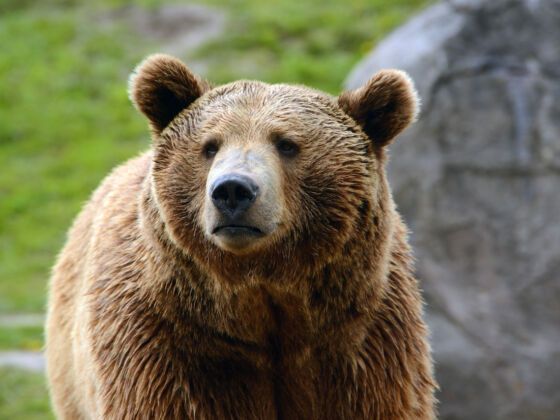Yellowstone grizzlies are among the most isolated in North America in a deteriorating habitat. They’ve been listed as an endangered species since 1975, when their population fell below 200. With their population rebounding today up to an estimated 780, their delisting as an endangered species is being deliberated. The question is, is it for the better or for worse?


Yellowstone's Grizzlies Are Essential to Our World, so Why Aren't We Fighting Harder to Preserve Them?
Since 1975, their range has expanded well beyond their recovery zone, beyond the park boundaries and into private land. Though these grizzlies have technically met the population goals established by the U.S. Fish and Wildlife Service in 1982, many scientists and experts don’t agree that the numbers themselves capture the full story of whether bears have recovered completely.
Delisting Yellowstone grizzlies would hand over their management to the state, rather than the federal government. Carnivore ecologist Dr. Jim Halfpenny, who calls for delisting, told Wyoming Public Media (WPR), “The purpose of the endangered species act is to take the might of the federal government and take care of a species that is in trouble until we can lift it up until it will survive in perpetuity. And then give that management over to the state. I think we’ve reached that point with the grizzly bear.”
And on the other side, many believe that connectivity should be the number one priority regarding grizzly bears, not delisting them. Yellowstone grizzlies’ nearest neighbors are in Glacier National Park, 370 miles away. Connecting the two populations is what many believe is the key to maintaining not only their genetic diversity, but their long-term health as a population. On top of that, their primary food sources-whitepark pine nuts and spawning cutthroat trout-are in serious decline, largely due to wildfires and beetle infestations. The shortage makes for hungry, or hungrier, bears, leading to more human encounters. Sylvia Fallon, a Senior Scientist with the Natural Resources Defense Council (NRDC), stated, “To remain viable, this population of grizzlies needs a secure future with a diversity of food sources and an effective plan to help people and bears avoid conflicts. And, above all, the bears need the freedom to roam so they can maintain genetic diversity by breeding with other grizzly bear populations found to the north and west.”
The outcome of this heated debate could establish the fate of Yellowstone’s grizzly population. But, it also has the potential to establish much more. The decision to keep them on the list, or not, could pave the standard of what a recovered species means today and the future of wildlife preservation. As the nation’s first National Park, Yellowstone sets the bar for many policies. This decision may determine what kind of west we want to leave for future generations. “It’s a reflection of the landscape that we’ve left for our top predators,” says Stuart Pimm, a conservation biologist at Duke University. “We’ve fragmented the landscape. Grizzly bears are animals that require large swaths of land, and those areas are not available. So if we’re going to maintain a diverse population, we’re going to have to manage the species.”
Whether they have recovered or are on the road to recovery, Yellowstone grizzlies still have an uncertain future ahead of them. Back in 2007, when they were delisted, only to be listed again in 2009, the deputy interior secretary Lynn Scarlett wrote, “I believe all Americans should be proud that, as a nation, we had the will and the ability to protect and restore this symbol of the wild.” We certainly still have the ability, but the question is, do we still have the will?
This isn’t just about bears. It’s about everything they represent. Bears are symbols for wild nature. They require vast tracks of wilderness to roam and thrive. As the struggle between modern and wild continues, we are leaving no place for them to roam. Their continued existence is important as our own. Their fate is tied to ours. We have an opportunity to protect some of the last standing grizzlies in the lower 48. If we’re not willing to protect the most iconic land mammal, what does that say about us as a species?
The total population of grizzlies in the continental United States was once estimated at 50,000 to 100,000. By the mid-1900’s, it dropped to about 1,000. And today, there are an estimated 1,800. But the numbers don’t tell the full story. Delisted or not, they will still remain vulnerable. They will still face food shortages, droughts, human encroachment and development. But now, we still have an opportunity to allow them to recover and thrive.